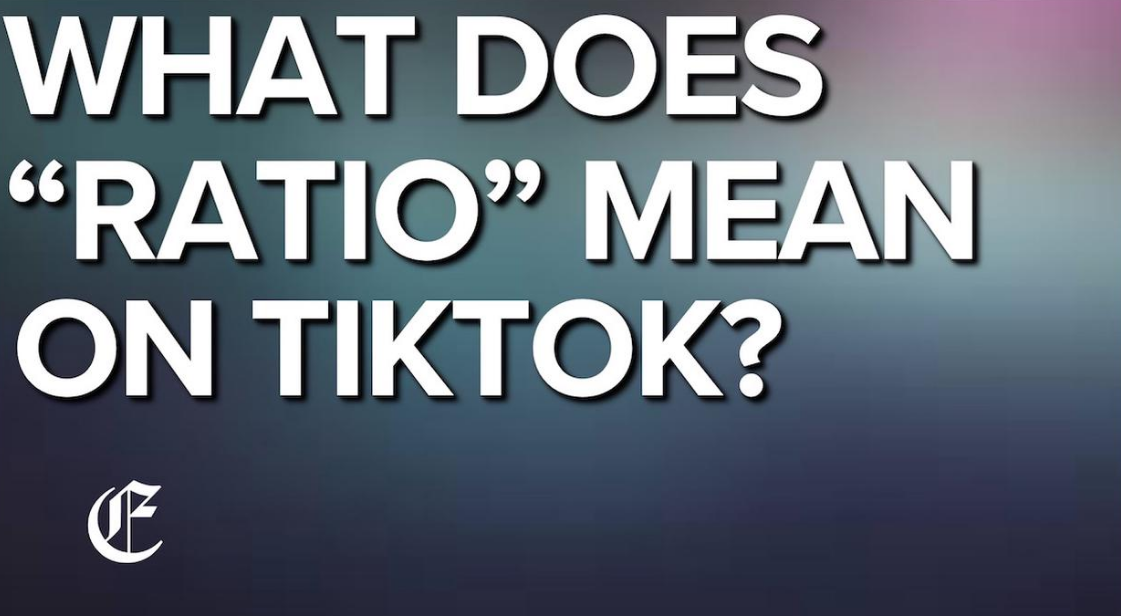What Does the Ratio Mean on TikTok? As TikTok has continued to dominate digital culture, we’ve had to get used to a lot of different phrases and lingo that have been adopted by users on the app. One that frequently pops up on TikTok, and across social media as a whole, is ‘ratio.’
As with any online lingo, like ‘accountant’ or FYP, the meaning of ‘ratio’ on TikTok is a little different from how we use the word in everyday life.

Table of Contents
What does the ratio mean on TikTok?
If you have been ‘ratioed’ on TikTok, it usually means that your comment has more replies to it than it has liked. This implies that there are more people disagreeing with your comment than there are people agreeing with it.
So, when someone’s comment has been inundated with responses and doesn’t have a lot of support in terms of likes, it is safe to assume that they have had a pretty bad take on something and have been “ratioed” as a result.
Being ratioed also applies if a reply to your comment has more likes than your original comment, or if a TikTok has more comments than it does likes.
The term ‘ratioed’ comes from another Gen Z-populated social media platform: Twitter. If you Tweet something that proves to be unpopular, you might find yourself getting more Quote Tweets from people disagreeing with and/or mocking you than you do likes. If this happens to you, well, it’s safe to assume that you’ve been ratioed.
Is being ratioed on TikTok always a bad thing?
Not always. To make things more confusing, there is more than one way the word ‘ratio’ is used on TikTok. Sometimes, a user might comment on a TikTok saying “ratio me 1:1”.
This means that they want the likes on their comment to match the likes of the TikTok they’re commenting on. So, if a TikTok has 1,000 likes, the user’s comment will need to also have 1,000 likes in order to achieve a 1:1 ratio.
Sometimes, these ratios might get a bit more complicated and go on, and on, and on. If, for example, a user comments: “Ratio me 1:1:1,” this means that they want their comment as well as the reply to their comment to have the same number of likes as their original TikTok.
When was TikTok invented?
The brain behind the controversial app TikTok is Zhang Yiming.
He is a 36-year-old Chinese internet entrepreneur who is behind successful internet-based programs.
In 2012 Zhang set up ByteDance, the company behind TikTok, after leaving his first business.
By September 2016, TikTok had launched in China under the name Douyin.
In 2017 TikTok was available internationally and marketed toward young people.
The app did incredibly well after this, particularly among young people, and in July 2018 managed to have 500 million global active users.
International views on the app are divided as India has banned the app, Trump’s administration threatened to, and Indonesia placed a temporary ban on the app (that is now lifted).
In the UK, the app has been for many a source of entertainment – most notably at the height of lockdown.
Your comment can also be “ratioed” by the number of replies
If a comment has 5 likes and 100 replies, then it is usually a good sign that the comment has kicked off some controversy.
Typically speaking, comments on TikTok tend to receive more likes than replies.
However, if the number of replies is greater than the number of likes, then it usually means that people are arguing with each other in the reply section.
A video can also be “ratioed”
If a TikTok video has 10K likes, but one of the comments on that video has 20K likes, then that video has been ratioed.
Why? Because one of the responses to the video has received more likes than the video itself.
This is a difficult feat to pull off, as a video will typically receive a lot more views than the comments section.
In many cases, this means that the content of the video was so controversial that users “ran” to the comments section to see other people’s opinions about it.
Conclusion
In conclusion, “ratio” can be a bit difficult to understand at first. Although the meme originally started on Twitter, it has taken on a life of its own on TikTok.
Generally speaking, its meaning depends on the context.
For example, if someone posts “ratio” in response to controversial comment, then it is likely that the person in question is “throwing shade”. However, if it has been posted in response to something that isn’t offensive, then it is probably just a case of someone starting a game.
Basically, try not to flip out as soon as someone responds with “ratio”. It could be completely harmless and innocent.
